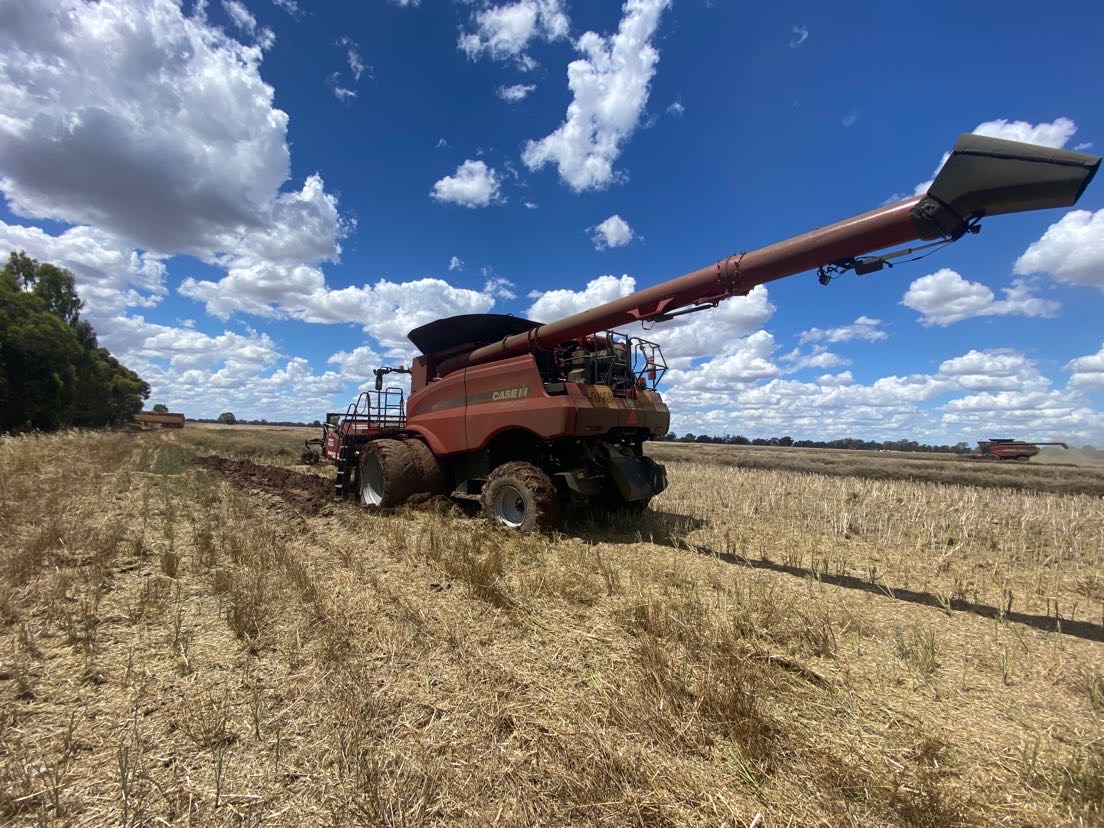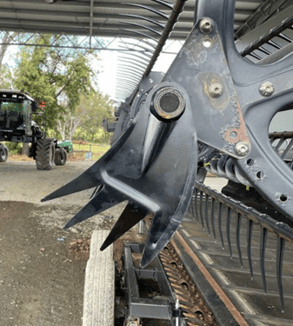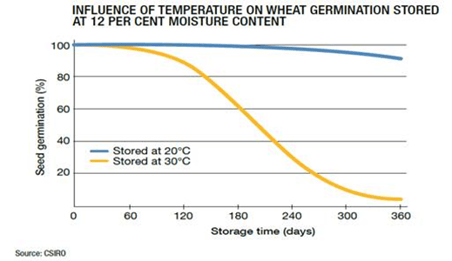Preparing for Wet Conditions During Harvest

Options for Harvesting Canola
It is important to assess your paddocks and make decisions based on the trafficability, potential rain forecast and seed colour change (SCC).
The cut off for windrowing is around 80% SCC. If you can get onto your paddock and choose to windrow, you must consider the risks of poor grain quality if the windrow gets wet. This includes lower test weight, reduced yield, seed sprouting and ultimately less income from the crop.
A useful tool is the canola harvest loss calculator: https://www.grainorana.com.au/documents?download=24
Desiccation
There are two chemical options depending on your desired outcome (always follow label instructions and adhere to withholding periods).
- Glyphosate at either 30% SCC, which is useful for weed control and will help with harvest maturity, OR 50% SCC onwards, which is still useful weed control but will not mature the crop. Please note: do not use glyphosate on crops you are going to harvest for seed as seedling vigour is greatly diminished.
- Diquat is the best option to dry the crop off, however there is a risk of increased pod shatter if it is left too long before harvest or if affected by a weather event
(Do not use paraquat as a desiccant on canola – it is not registered for this use and can cause problems with residues in the seed resulting in loads being rejected).
There is limited data on the effectiveness of pod sealers. Pod sealers are used to protect canola pods from shattering; however, they only show their advantage when a mature crop is subject to a shattering event such as a windstorm, hailstorm or extreme heat. They are more advantageous when used in drier, hotter years. Pod sealers can be applied by plane, however lower water rates may not provide adequate coverage across all the pods.
If you leave crops standing to direct head later, they will dry out faster than if they are in a windrow – compare it to pegging clothes out on the line vs leaving your clothes in the basket to dry.
Think about harvest logistics as well; it may not be feasible to leave all your paddocks for direct heading, so you may want to prioritise windrowing some paddocks that are flat for ease of harvest later.
If there is a possibility of using a smaller windrowing front this may help prevent large lumps in the windrow, making harvest easier and the windrow may dry out more quickly.
Direct Heading Canola - things that may help:
- Sharp knife section
- Knife guard with ledger holding the knife section firmly
- Reel at ground speed
- Reel tynes 90˚ over the top of the knife guards
- Reel tyne 5cm into crop

- Cross auger on front
- Modified feed drum to increase gap crop can feed into
- Vertical knives on the end of front
- Crop lifters (trial and error as to what works for you)
- Macdon ‘scissor hands’ (see picture)
- Don’t overload the sieves
Bogged Machinery Recovery
Always think about what you are doing before you do it and make sure all by-standers are well clear of the vehicles before attempting recovery.
To prevent accidents with a broken strap, use an old car or truck tyre threaded through the snatch strap as a dampener. Use a strap rated to twice the weight of the machinery that you are attempting to recover
For improved safety, use a soft shackle instead of a D-ring
Available from:
- https://uniliftequipment.com.au/heavy-recovery-&-towage.html
- https://www.tacticalrecoveryequipment.com/product/2-inch-industrial-soft-shackle-88-tons/
Please watch this informative video by GrainGrowers (Kondinin Group) on Machinery recovery: https://www.youtube.com/watch?v=vOsJABr6JoE
Thinking about next year
To ensure your seed continues to be viable following harvest, store at 20˚C (or less) and ensure it is a maximum of 12% moisture when stored. Aerate if possible.

Do a germination test before you put it in the silo and again before sowing. If you are uncertain, send it to a laboratory for testing. Ensure you budget for buying some seed if required. It may be useful to think about keeping or buying a bit extra to account for losses from slugs which are likely to be a problem next year. Closely monitor paddocks early next year for slugs, they are not always where they have been previously or in wet areas.
The disease load will be high following this year, using flutriafol on your fertiliser will reduce the risk of blackleg in canola, Septoria and stripe rust in wheat, and powdery mildew and scald in barley seedlings. In addition, crops next year are likely to require an early fungicide, followed by at least one more application (potentially two) – speak to your agronomist about which fungicides to use and when to use them.
New Member Discussion Groups
We have started a new Members Only initiative, “Small Farmer Groups” and held our first event last week at Gerogery. The aim of the small farmer groups is to provide Riverine Plains’ members with locally relevant and timely information driven by the group. You decide what you are keen on learning, and we will find the speakers/facilitators or equipment to help you learn and stay at the forefront of what interests you.
If you are a member of Riverine Plains and would like to organise a small group in your region, please get in touch. Next year, Membership Officer, Lynn Macaulay, will establish five small farmer groups across our region. Each farmer group will receive three discussions/workshops on topics you pick, and we deliver for you.
The topics discussed at this Small Farmer Group were; canola options for harvest, how to recover machinery safely, handling rain-affected grain and seed and we also took a look at next year.
Thanks to Nathan Soulsby from AGnVET Henty for leading the discussion.
Sources & further reading
2021 Rethink your approach to canola harvesting to optimise crop performance
Canola – Windrow on time, reap the rewards
Kassie van der Westhauizen - Harvesting tips for big wet Cereal and Canola Crops
https://graingrowers.com.au/courses/farm-safety
Typhoon – Primary Sales Australia
Factors affecting grain crop seed germination | Agriculture and Food


